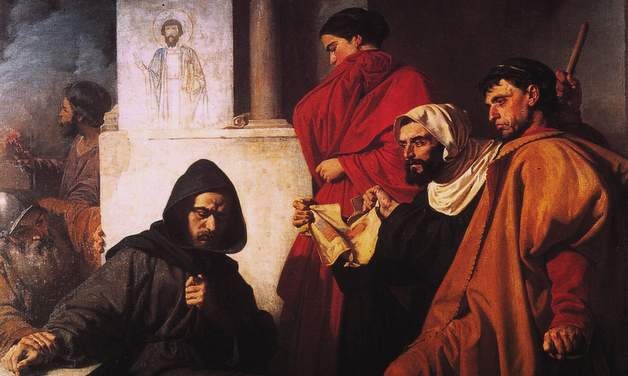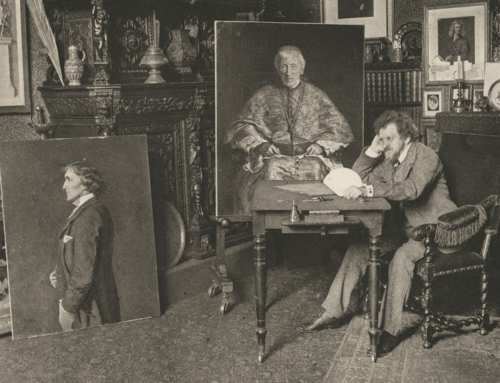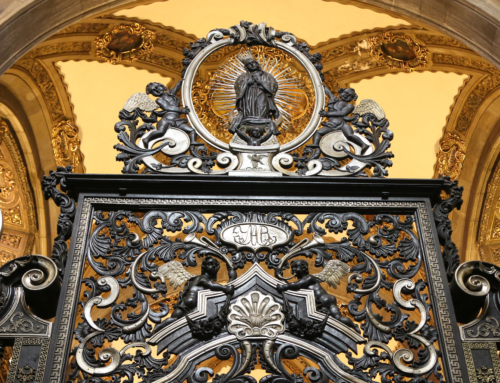Reading some verses of Psalm 8—“When I see the heavens, the work of thy fingers, the moon and the stars which thou hast established; what is man that thou art mindful of him, and the son of man that thou dost care for him?”—cannot help but stir the soul towards contemplation of the Almighty and Invisible God. St. John Damascene perhaps gained inspiration from this psalm, since he dedicated his life to the defense of the goodness of the created world and the use of plain old matter as a means of drawing close to the Lord.
St. John lived when the heresy of Iconoclasm waxed strong, plaguing the Eastern Church in the eighth and ninth centuries. He fought vigorously against the decrees of Emperor Leo III, which forbade the use of icons by Christians on account of the laws against idolatry in the Old Testament. Pope Benedict XVI, in his collection of audiences on the Church Fathers and Teachers, credited St. John with being “among the first to distinguish in the cult, both public and private, of the Christians, between worship (latreia) and veneration (proskynesis).” St. John noted that worship was due to God alone, while veneration, a lesser form of honor, was given to the saints. Icons too could be venerated, because they were images of Christ (and the saints) which called to mind and taught about the invisible God who loved men enough to become one of them.
St. John explains in his Discourses against those who calumniate the Holy Images that man can progress from the knowledge of the senses to knowledge of the Divine:
Since He is no longer physically present, we hear His words read from books and by hearing our souls are sanctified and filled with blessing, and so we worship, honoring the books from which we hear His words. So also, through the painting of images, we are able to contemplate the likeness of His bodily form, His miracles, and His passion, and thus are sanctified, blessed, and filled with joy. Reverently we honor and worship His bodily form, and by contemplating His bodily form, we form a notion, as far as is possible for us, of the glory of His divinity. Since we are fashioned of both soul and body . . . it is impossible for us to think without using physical images. Just as we physically listen to perceptible words in order to understand spiritual things, so also by using bodily sight we reach spiritual contemplation.
Already in his own day, St. John says, it was held to be an ancient tradition of the Church to use material images as aids to prayer and to teach the faithful. He also notes that God was the first to make images. Some things He made are purely material and contain only a trace of His perfection. He made man, though, in imitation of Himself by also giving him an intellect and will. Man is a composite of soul and body, and does not simply have innate ideas of things. He learns by abstracting ideas from the physical things he comes into contact with. As St. John says, “A certain perception takes place in the brain, prompted by the bodily senses, which is then transmitted to the faculties of discernment, and adds to the treasury of knowledge something that was not there before.”
In the Discourses St. John wrote too that there are different kinds of images. The natural or perfect image is the highest kind. The Son of God, the second Person of the Blessed Trinity, images God the Father in this way. The nature of the Father is shared by the Son. Everything that belongs to the Father except for the property of being unbegotten belongs also to the Son. “But when the fullness of time had come,” the Perfect Image took on the imperfect image of human nature in order to save us. Now that Jesus Christ has ascended to heaven we use material images to remind us of His life and all that He did.
Pope Benedict used St. John’s own words to sum up the place of images in our faith:
But since God has now been seen in the flesh and lived among men, I represent that part of God which is visible. I do not venerate matter, but the Creator of matter, who became matter for my sake and deigned to live in matter and bring about my salvation through matter. I will not cease therefore to venerate that matter through which my salvation was achieved.
✠
Image: Domenico Morelli, The Iconoclasts







